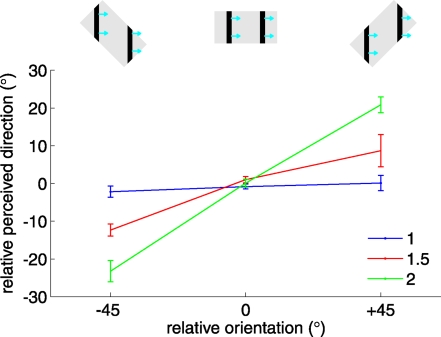Fig. 3.
The effect of aspect ratio on the barber pole effect. The relative orientation is the angular difference between the aperture's orientation and the direction orthogonal to the grating's orientation (as shown in the Insets for barber poles with aspect ratios of 2). Data obtained in matching conditions (i.e., with stimuli of matching relative orientation) were pooled across absolute orientations. The perceived direction is plotted relative to the direction orthogonal to the grating's orientation. The strength of the barber pole effect, i.e., the degree to which the perceived direction was biased toward the aperture's orientation, grew stronger when the aspect ratio increased.

